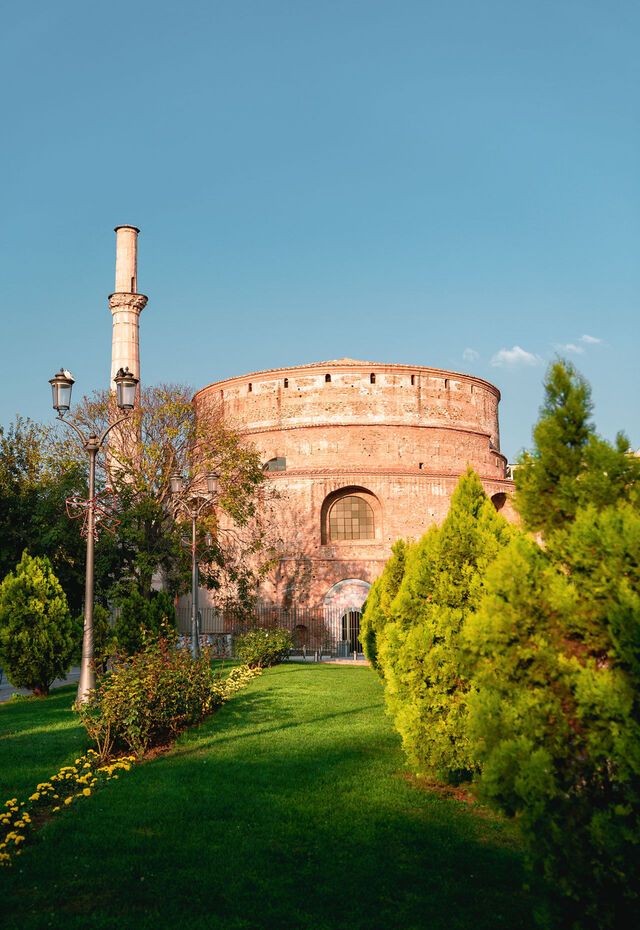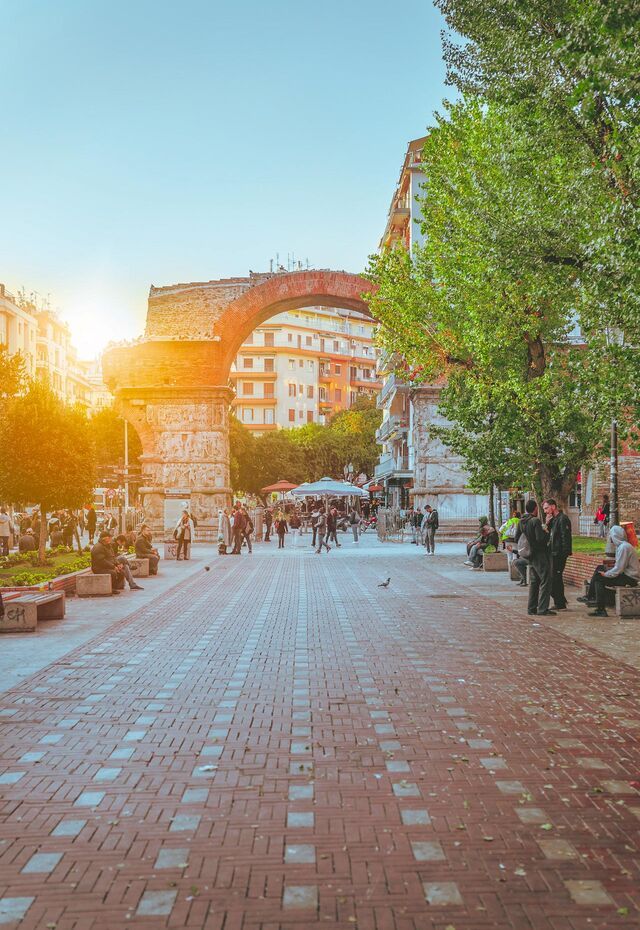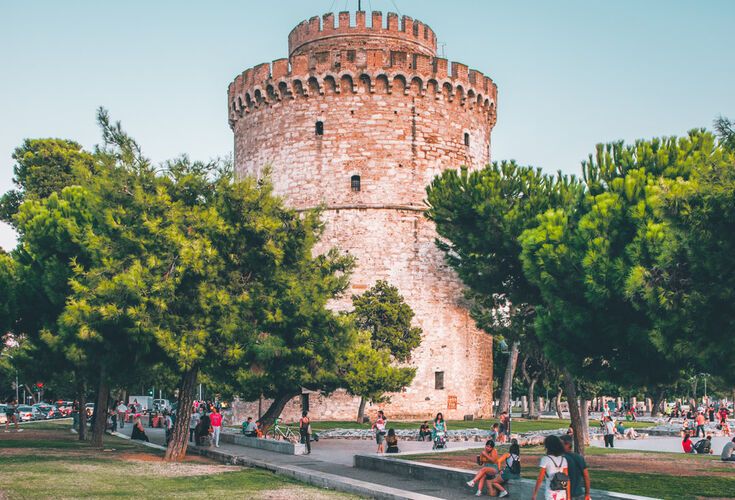White Tower
We start at the emblematic White Tower, the 15th century prison that is now a museum that tells the story of Thessaloniki (its diverse personalities and cultures, history as a commercial hub, artistic & intellectual scene and rich culinary traditions) all the way from antiquity to today.
The Galerian Complex
A short walk away is a group of monuments from the late 3rd and 4th centuries AD, when Caesar Galerius Valerius Maximianus chose Thessaloniki as the seat of the eastern part of the Roman Empire. The once vast complex now consists of individual parts, amongst them the Arch of Galerius (to commemorate Galerius’ successful campaign against the Persians), the Octagon, the Apsidal Hall and – most impressive – the UNESCO-protected Rotunda (which has served as a place of worship for pagans, Christians and Muslims).
The Church of Hagia Sophia
From the 8th century, one of the oldest churches in Thessaloniki and another of the city’s many UNESCO World Heritage site monuments.
Bey Hamam
Near Aristotelous Square, these were the first hamam baths in Thessaloniki. The building is perhaps the best example of intricate Ottoman architecture in the city and is used today as a site for cultural events.
Roman Agora
Right next door is the Roman Agora (or Forum) which, along with the Galerian complex, constituted the heart of Thessaloniki’s public and political life during Roman times. Amongst the remains are two Roman baths (one excavated) and a small theatre.
Agios Dimitrios Church
Another of the UNESCO-protected monuments, best known for its crypt containing the relics of the patron saint of Thessaloniki, who was a Roman soldier and an early follower of Christianity. When he died, St Dimitrios was reputedly dropped into the church well that he used as a secret meeting place with other Christians.
The Administrative Complex of the Kyprion Agonistou
Another excavation between the apartment blocks of a residential area. This 3rd century BC site is believed to belong to the Hellenistic period.
Upper Town (Ano Poli)
We end in an area where you could spend most of the day … Thessaloniki’s labyrinthine upper town. The sites here seem endless – the Byzantine Bath (one of the best-preserved from this period), the Church of Hosios David (Latomos Monastery) and the Vlatadon Monastery – all of them UNESCO-protected. But it’s worth giving a special mention to the castles of the Upper Town (the Heptapyrgion and Trigoniou Tower). Not only will you admire these Byzantine fortresses but the views of the city, the Thermaic Gulf and – if you’re lucky – Mt Olympus are outstanding.



